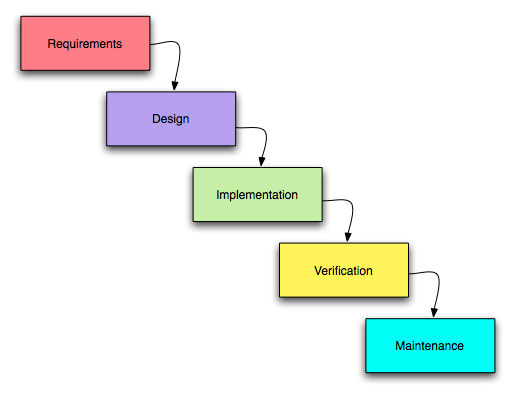Creative people and technical SEO people must work together for the success of their common clients. As a result, SEO is now a team sport. Everything must be properly formatted with SEO, even when this places constraints on the creative deliverables.
How Agencies Deal with this Matters
Below is an interview with an Austin, TX based agency on how they solve this.
Juan Reyes of Monkee Boy
Monkee Boy is a website development and digital marketing agency in Austin, TX. Juan Reyes is their Digital Marketing Manager. This article was written from an interview which occurred on February 1, 2019.
Who Is Monkee Boy?
Monkee Boy is a firm with two sides: website creation and digital marketing. They:
- Provide services to a variety of industries and non-profits, without their being much industry specialization.
- Prefer clients who meet the somewhat elusive characteristic of being interesting.
- Work to avoid clients who seem challenged to keep up with their project responsibilities.
If you’ve worked in website development or digital marketing for any time, you know successful efforts need collaboration. Monkee Boy has an involved scoping process during which the clients must give information. Prospects who are habitually late in providing needed details are not taken on as clients.
DISCLAIMER: In the spirit of full disclosure, I am a volunteer and board member with an Austin based non-profit who has hired Monkee Boy. I’m not sure this is relevant for this article, but I prefer to err on the side of full disclosure.
Interesting Ideas Gleaned from the Interview
This interview included many interesting ideas Juan provided that are worth focusing on.
A Very Strong Process Orientation
Monkee Boy has a very rigid process orientation, that is both their strength and at times one of their biggest challenges.
I can personally attest to how strong and impressive their process orientation is by virtue of the non-profit I volunteer with. At the time we selected Monkee Boy, I was in charge of finding a vendor.
Their CEO came to a board meeting, described who they are, what they do, and how they do things.
The entire board was very impressed with this informative presentation and discussion. So much so that after their CEO left, the board voted unanimously to stop the search and sign a contract with Monkee Boy, even though they were not the lowest cost provider.
So how is their strong process orientation one of their biggest challenges? Their processes need to be periodically updated as the dynamics of the industry change. Updating their processes so they make the right changes at the right time is a bit of a challenge.
Keyword Sitemaps
As Juan was describing how they do what they do, he threw out the phrase “Keyword Sitemap”. It’s a phrase I had not heard before so I asked him to speak in more detail. In short, a Keyword Sitemap is the URL Sitemap, overlaid with what I’ll call “keyword intentions”.
It’s their way of ensuring they don’t create SEO cannibalization where they want page X to rank for keyword A, but accidentally create a site where page Y ranks higher.
Everyone has some way of managing SEO cannibalization. This Keyword Sitemap is the most proactive one I’ve encountered to date.
In House Everything
And, I mean everything. Even writing and link building. They used to hire outside writers but now use staff writers to have tighter control over timelines and schedules.
Functions of Homepages
This was a really interesting part of the interview for me. The main idea expressed is that the home page should be simple, uncluttered, about branding, and should direct people to landing pages and sales pages via visual cues and the menu structure.
It’s also important the home page NOT be a destination of internal links, as that draws undue attention to the home page through SEO and organic traffic.
While (at least to me) this sounds right, it’s not unusual to see home pages that try to do a bit of branding and a bit of sales on the same page. I confess that on occasion, even I have done so.
Every Website Requires a Marketing Assessment
Even clients who need no marketing. The purpose is to make sure the Monkee Boy team really understand the client's intention. Some people think “visibility”, not “marketing” when to others those two words mean the same thing.
I shared an interesting example from my past, which makes this point well, so I’ll share here as well. I met a developer one year at WordCamp who had previously had what to her was a frustrating conversion with a client.
The client was a developer who built entire sub-divisions rather than individual homes. He needed a new website, yet he insisted the website contain no contact form, no phone number, no email, no nothing to allow anyone to find him, then contact him.
The reason was his sales cycles were very long and he knew everyone involved very well. He needed a new website for two reasons:
1) Competitors of his had better looking websites, and
2) The website was primarily a gallery of images showing past projects.
In effect, he needed a URL on his business card that would take someone to an electronic brochure. The last thing he wanted was anyone to ever contact him through his website. He never did business with people whom he didn’t already know, and know well.
Sorting of Prospects
The marketing assessment I mentioned earlier was part of a larger project scoping phase. This is also where they sorted prospects into “They look like good clients” vs “They don’t look like good clients”.
Content Stalls During Initial Scoping
The red flag that tells that someone will likely be a difficult client is what Juan referred to as Content Stalls. A content stall is when the prospect needs to provide something to move the assessment forward, and for whatever reason, stalls on doing so.
If you stall too much during their scoping process, they don’t take you as a client.
Ensuring Creative Deliverables Include Strong Technical SEO
My interest in this topic is what inspired these articles (this is one in a series).
Their primary strategies in ensuring technical SEO is properly done for all their creative work is two-fold.
1) Everyone knows a bit of everyone else’s job. The technical SEO people understand the basics of the job functions and requirements of the designers and the designers understand the same of the technical SEO people.
2) Weekly project meetings where people from the various disciplines huddle to talk about specific project deliverables. In these meetings, people identify what they need for their part of the deliverable, and listen to others say the same.
Trade-Offs
Having said that, life is a never-ending series of trade-offs. From a technical SEO perspective, some things are non negotiable (such as H1, H2, H3, etc headers) and some things are. An example of a negotiable item is “lazyload”, which is a way of loading images and videos such that a coarse version of the image is initially loaded to save bandwidth. Then once the coarse image is complete, the missing data is loaded to give the extra detail.
Challenges
This was discussed earlier, but bears repeating. Their process orientation is so strong, their keeping abreast of industry changes informs what process changes they make and when. Making the right process changes earlier enough, but not too early, is a bit of a challenge.
In Summary
The ways Monkee Boy make sure the important technical SEO occurs right in every creative deliverable is by virtue of the following:
- A strong process orientation.
- Doing everything in-house.
- Ensuring everyone knows the basics of everyone else job requirements.
- Weekly project meetings that focus on customer deliverables.
Related Posts

Kevin Carney is the Founder and CEO of the botique link building agency Organic Growth. He has 8 years of SEO experience and 25+ years of experience managing large technical projects.








[…] SEO Is A Team Sport: Agency Interview with Monkee Boy […]